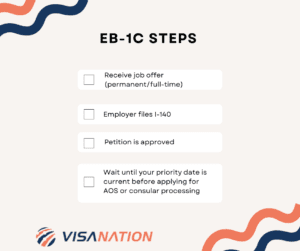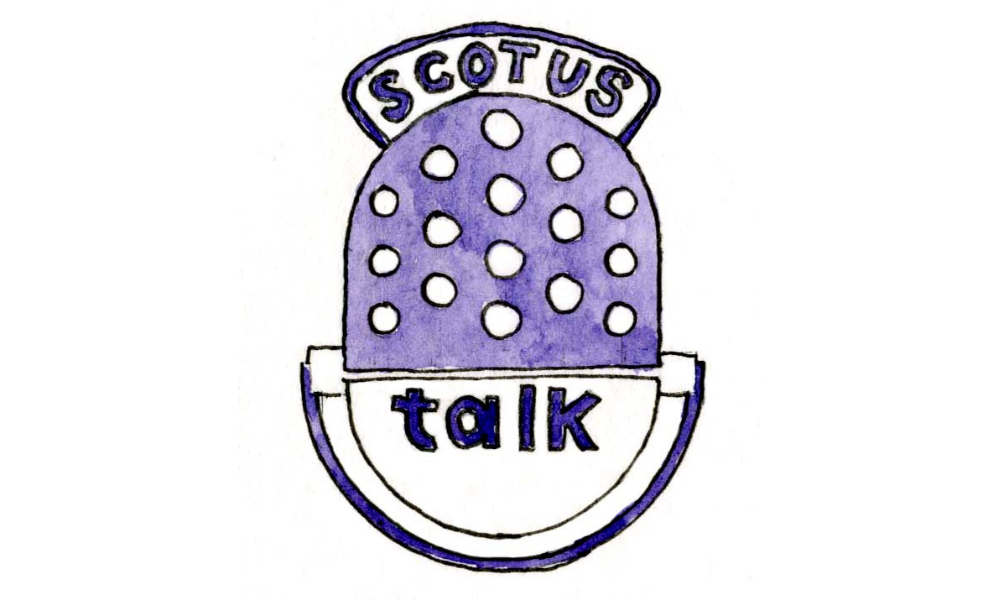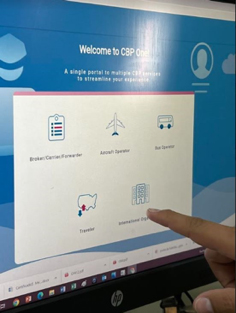EB-1C Green Card for Managers: Process, Requirements, Tracking
With so many international companies doing business in the United States, managers, executives, and other senior personnel often choose to move permanently to the United States to oversee operations using the EB-1C green card. Many of these individuals consider attaining a green card to minimize the issues often related with having to renew their nonimmigrant status or due to the fact that they want to remain in the United States and become citizens.
Based on this scenario, the EB-1C green card may be the best option. However, before you make a decision, it is always advisable to consult your immigration attorney to ensure that you are making the right decision for your situation.
What is the EB-1C Green Card?
The first preference employment-based immigration petition, or EB-1 green card, is an employment-based petition for permanent residence. The EB-1C, in particular, was designed for the most proficient and skilled foreign managers and executives.
Over 40,000 immigrant visas are allocated for the first preference category each year.
There are two ways to obtain an EB-1C status:
- If the individual has already arrived in the United States under L-1A status, they may apply for an Adjustment of Status (AOS). Their employer may petition for an EB-1C on their behalf, showing that the individual has a permanent offer of employment before submitting the I-485 adjustment of status application.
- If the individual is outside the United States, the processing must be done abroad at a U.S. consulate. However, this is not the preferred method due to the fact that the petition will be greatly scrutinized and require substantial paperwork. It is recommended to transfer from L-1A status to an EB-1C.
One of the major benefits of the EB-1C and any green card in the first preference is the fact that a PERM Labor Certification is not required to petition. The PERM is an aspect of the Department of Labor that requires many employment-based green card employers to go through a recruitment process to ensure that you, the beneficiary, are not taking any jobs from qualified U.S. workers. It also requires your employer to determine and pay the prevailing wage for your position according to your state and location of work. Therefore, not requiring a PERM is a major advantage of the EB-1C.
EB-1C Green Card Requirements
In order to be considered as a candidate for an EB-1C green card, the candidate and the employer that the candidate will work for must meet certain requirements.
The Candidate
- Must have been employed for one year within the past three years preceding the petition by the parent company, overseas affiliate, branch, or subsidiary of the U.S. employer
- Must be seeking to work in the United States in a managerial or executive capacity with the same employer, an affiliate or a subsidiary of the employer
The Employer
- Must conduct business with the United States
- Must have been in existence in the United States for at least one year
What is the EB-1C Process?
The process can be broken down into a few simple steps:
- Firstly, you must receive an offer for permanent and full-time employment.
- Your employer then needs to file an I-140 Immigrant Petition with your appropriate service center. USCIS discontinued using its legacy e-filing system for five forms, including the I-140, so your employer must send hard copies.
- Once the petition has been approved, you and your employer need to wait until your priority date is current before applying for an adjustment of status or consular processing.
Priority Dates
When applying for a green card, you will likely hear the phrase “priority date” thrown around often. The simplest definition is that your priority date is the day that the USCIS receives your I-140 petition. For the sake of explanation, let’s say that your priority date is August 8, 2017.
You will need to check your priority date against the “final action dates” that you will see in the Department of State’s monthly visa bulletin. These final action dates vary based on the green card preference level and country of origin. If too many people petition from one country petition for a certain green card, then the date will go backward (or retrogress). If not enough people petition, then the date will go forward.
If you see that the final action date for the EB-1C and your country is set at August 8, 2014, then you will need to wait until the final action date passes or matches your priority date. Keep in mind that this does not mean that you will wait three years. The final action date can fluctuate and can sometimes move very quickly or very slowly.
If your category’s final action date is set at a date at or before August 8, 2017, or if the category just has a “C” in it, then you will be able to adjust your status or go through consular processing as soon as your petition is approved.
Adjustment of Status vs Consular Processing
Once your priority date is current and your I-140 has been approved, there are two routes you can take to actually receive your EB-1C green card.
The first is through adjustment of status. This route is only available to those that are already in the U.S. under a nonimmigrant status (such as H-1B, L-1, E-2, etc.) and simply need to have their status upgraded from nonimmigrant to immigrant. To do this, you need to file an I-485 along with the associated fee to the USCIS. Once approved, you will be a green card holder and the USCIS will mail you your physical card in about six months.
The second path is through consular processing. If you are already under a nonimmigrant status, then you can choose between adjustment of status and consular processing. If you are outside the U.S. you must go through consular processing. This involves making an appointment with the U.S. Embassy or Consulate in your home country. At your appointment, you will need to participate in a one-on-one interview with an immigration officer to determine if your case is legitimate and if you are truly qualified for your EB-1C. Keep in mind that your green card can still be denied at this point.
The best advice for your consular interview is to be relaxed and tell the truth. If you do not know the answer to a question or you think that the officer might not like your answer, it is always better to be honest than to make something up or embellish the truth. If discovered, dishonesty can bar you from further immigration attempts while the worst that can happen if you are truthful is that your current visa is denied. Your immigration attorney can coach you through the process step by step to ensure that you have the best chance of approval.
If your consular interview goes well, you will be able to enter the U.S. as an EB-1C holder and your green card will be mailed to you.
EB-1C vs. L-1A: What Is The Difference?
The primary difference between the two is that the EB-1C is an immigrant visa while the L-1A is a temporary nonimmigrant visa. Even though L-1A status is not a requirement for immigrant benefits in this category, the immigrant petitioner’s case will be stronger for EB-1C if they had prior L-1A status.
Under the L-1A nonimmigrant classification, an employer in the United States can transfer a manager or executive from one of its international offices to one of its United States offices. In addition, L-1A permits a foreign employer to send a manager or executive to the United States to establish an affiliate office when one does not currently exist.
Despite the requirement similarities, entering into the U.S. under L-1A status is not necessarily the best route to EB-1C status. This is because one of the requirements for the EB-1C is that you must have worked at the multinational company’s foreign branch for at least one year in the three years leading up to the EB-1C petition. If you have spent the last three to seven years in the U.S. under L-1A status, you will be ineligible for an EB-1C until you travel back to your home country and work for the foreign branch for at least a year.
Processing Time
The USCIS generally processes cases in the order they receive them. In order to speed up your case, work with your immigration attorney to make sure your information is correct, accurate, and complete.
It usually takes 6 months of processing time for the EB-1 visa’s I-140 petition. Many people ask if premium processing is available for the EB-1C green card. While premium processing, the option to pay an additional fee to have your petition processing time expedited to 15 calendar days, is available for most green cards that make use of the I-140, it is not available for the EB-1C.
Your I-485 will also take about six months to process, so you can count on at least one year of processing.
You should also take your priority date into account. Usually, the dates for the first preference level are current in the visa bulletin. However, for countries with large populations such as India and China, the date can sometimes retrogress, requiring applicants to wait until the next fiscal year to move on to the next step. Keep an eye on the latest visa bulletin to see where your date stands.
EB-1C Green Card Abuse
There has been recent attention drawn to the fact that the EB-1C can be easily abused by outsourcing firms that wish to take advantage of the system. Because there are no rules that require the manager or executive to be exceptional or extraordinary, all you need to do is get a job at an agency overseas which will put you on the fast track for a management position. After a year of management, you will be eligible to be transferred to the U.S. through the EB-1C green card.
Opponents of this method claim that the other green cards in the first preference require the applicant to be outstanding or to have extraordinary achievement, which serves as a barrier to entry and makes the green cards more exclusive and more difficult to exploit. In contrast, the EB-1C has simple requirements that should be modified to be more exclusive.
Learn everything about EB-1C Denial.
Because the PERM is not required, the prevailing wage is not mandatory either. Therefore, unscrupulous firms will transfer employees to the U.S. to work for far less than what U.S. workers would make, thus displacing the local workforce.
Also, as we have previously mentioned, those who are in the U.S. under a nonimmigrant status are at a disadvantage, as they need to travel to the foreign branch and work as a manager or executive for a year before being eligible.
Several petitions to change the EB-1C requirements or to remove the EB-1C designation altogether have been submitted to Congress, though no action has yet been taken to make changes.
Frequently Asked Questions
Below you will find answers to questions that our immigration attorneys are often asked about this topic:
What are the benefits of the EB-1C visa?
Some of the benefits of the EB-1C are that no labor certification is required, it is considered an immigrant visa classification which means you can get lawful permanent residency for yourself as well as unmarried children under 21 and spouse. With this green card, you can travel out of the U.S. and come back freely, you can get an education at a U.S. school and work lawfully.
What are considered qualifying relationships?
The three types of qualifying relationships are parent/subsidiary, branch office and affiliate.
What are the types of parent/subsidiary relationships?
The first type is that one of the companies owns more than half of the other company and controls it. The second type is one of the companies owns half of the other company and controls it. The third type is one of the companies owns 50% of a fifty-fifty joint venture and has equal control and veto power of the joint venture. The final type is one of the companies owns less than half of the other company but operates no control over it.
What types of managers qualify for the EB-1C visa?
Personnel managers and function managers are the two types.
What are some of the documents I need to apply for the EB-1C?
It’s best to consult your immigration attorney for a comprehensive list of documents required for your case, some of them may include:
- Tax returns for the U.S. and foreign company
- Signed statements from authorized company reps detailing the relationship between the two companies
- Articles of incorporation
- Organizational charts
- Business licenses
What are the similarities between the L-1A and EB-1C requirements?
Both of these require that the U.S. petitioner is a parent, subsidiary or affiliate of a company in another country and that the beneficiary has worked in the three-year period before filing the petition with the parent, subsidiary or affiliated company overseas.
What are the differences between the L-1A and EB-1C requirements?
The EB-1C has a requirement that the beneficiary’s position at the foreign company was in a managerial or executive capacity while the L1A allows individuals who were employees with specialized knowledge at the foreign company to transfer to the United States to work as executives or managers.
How Can I Track My EB-1C Green Card Petition?
Because of all the time, money, and effort invested in your green card, it is not surprising that many applicants are interested in tracking their investment. Unfortunately, the USCIS does not have a tracking system that would allow you to keep close tabs on your petition’s progress.
However, there are certain websites that offer services that allow you to connect with other applicants during their process. By creating an account, you can see how long it is taking other petitions to be approved or denied.






